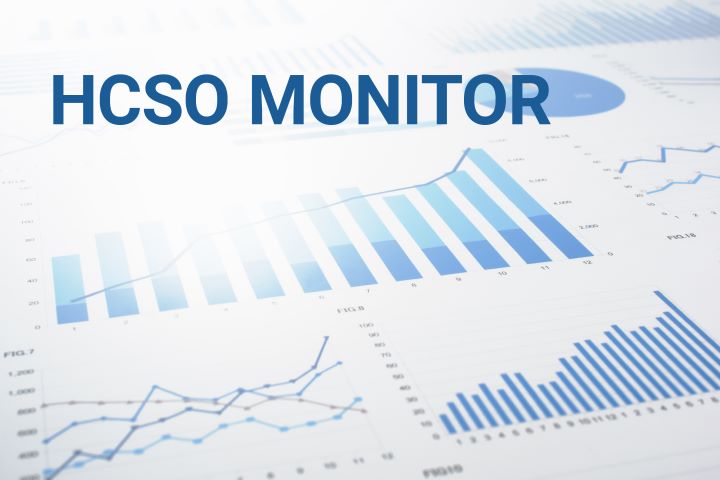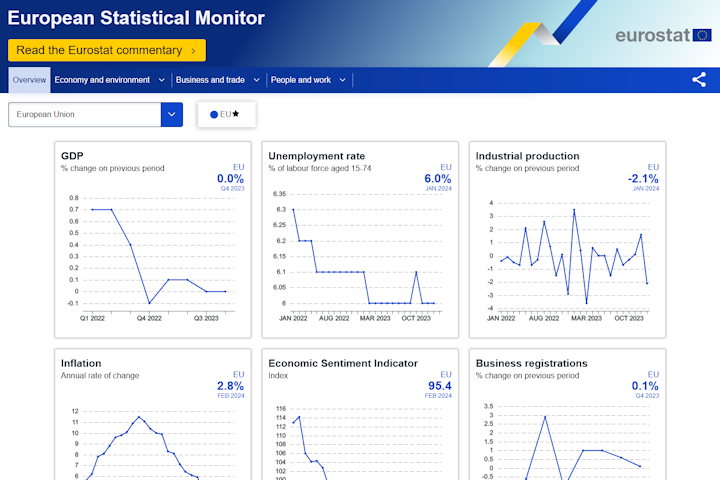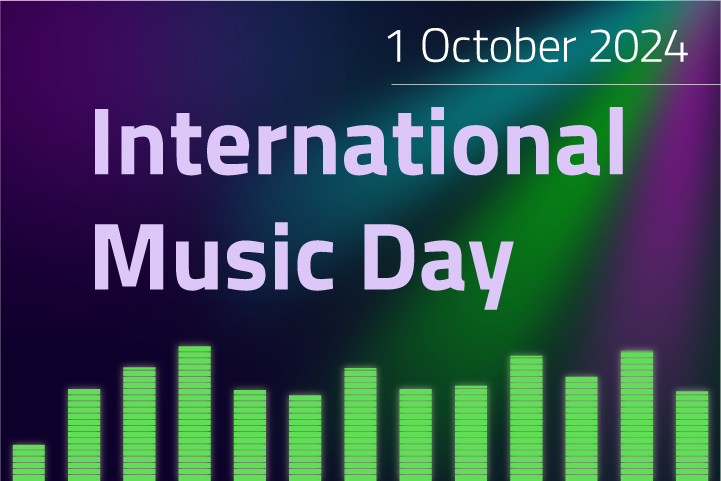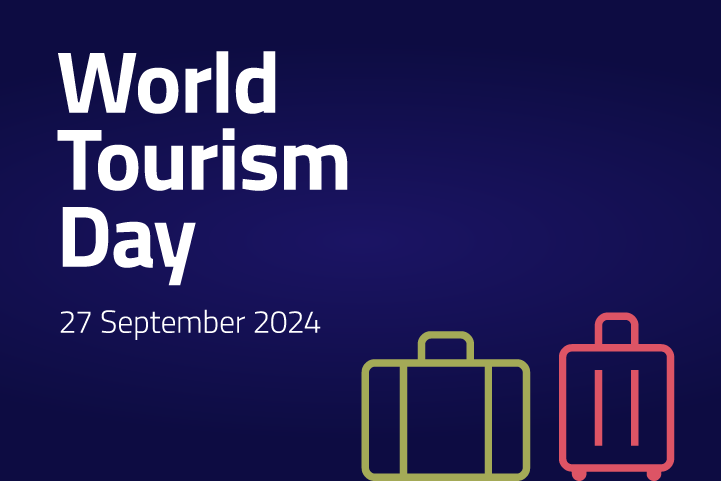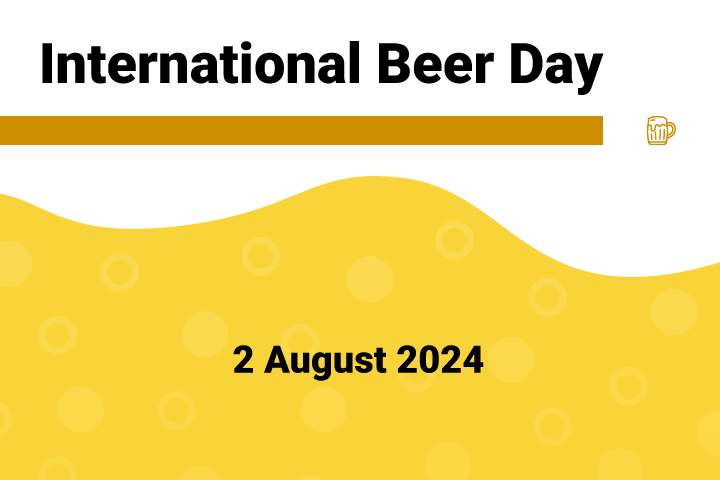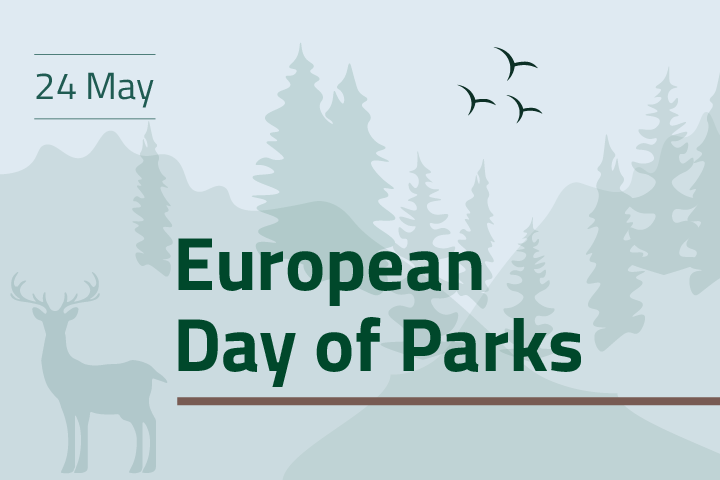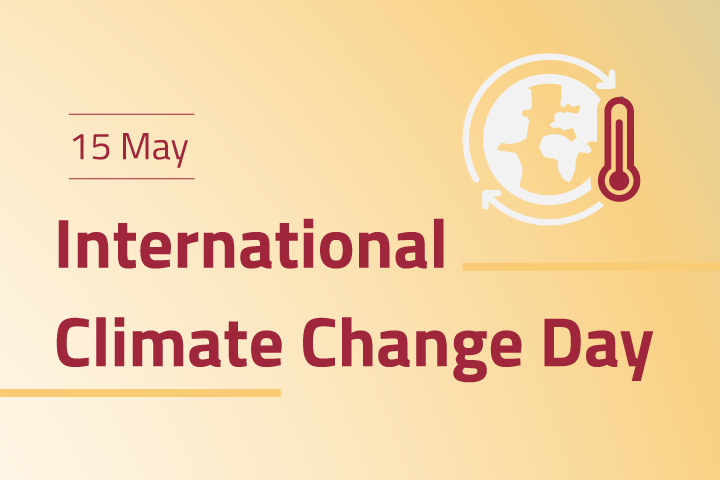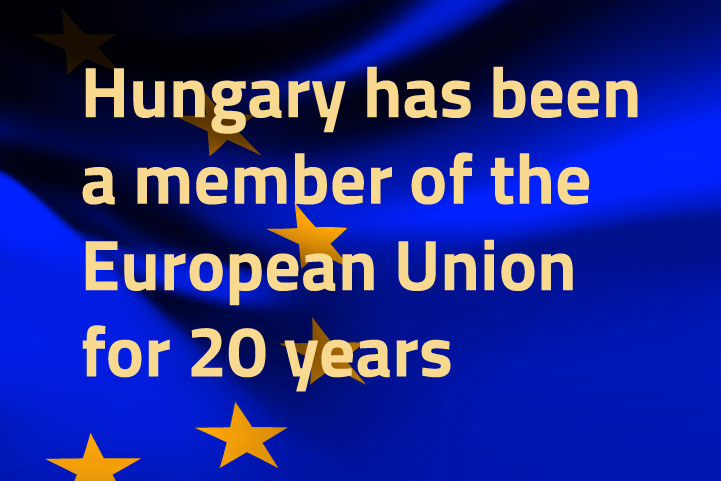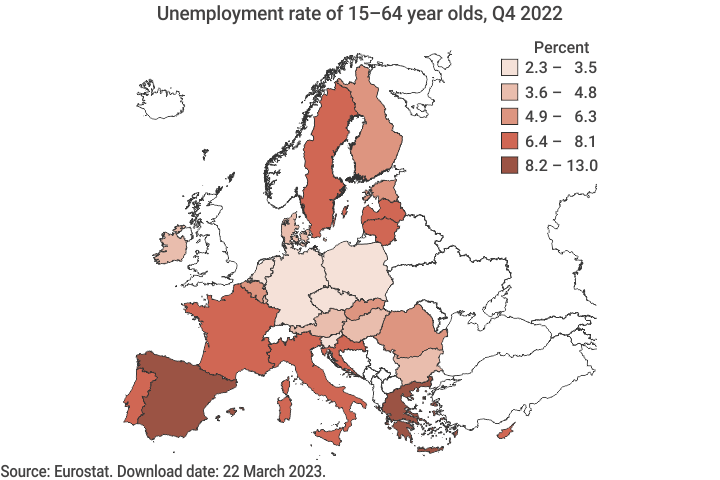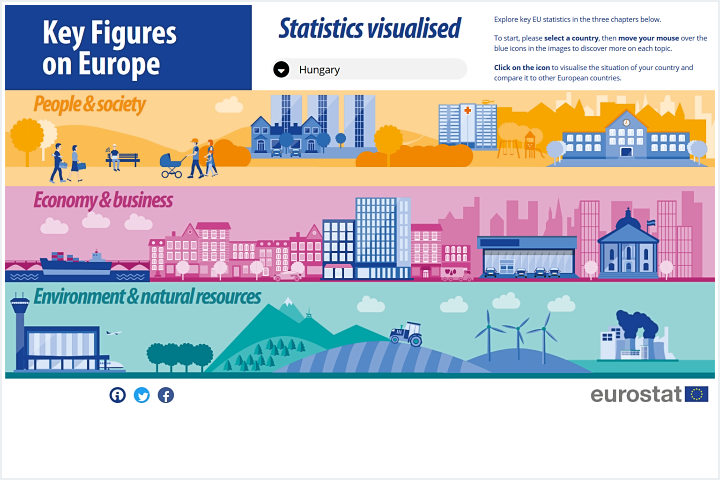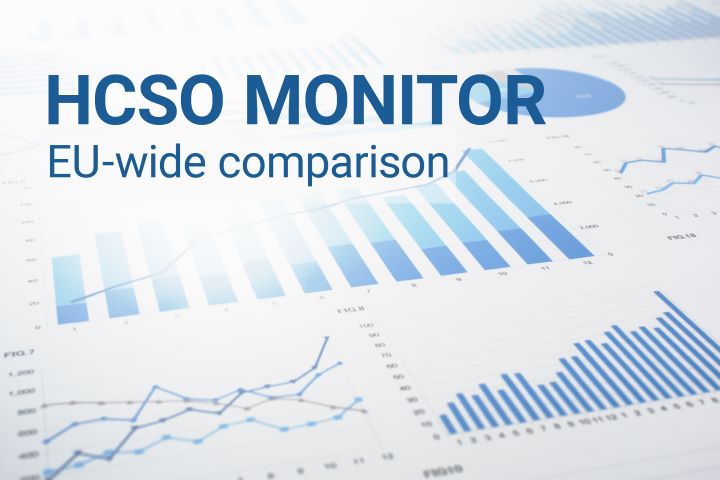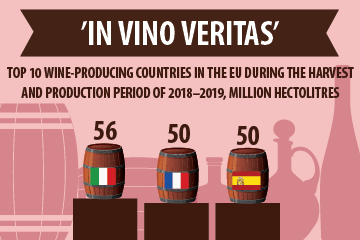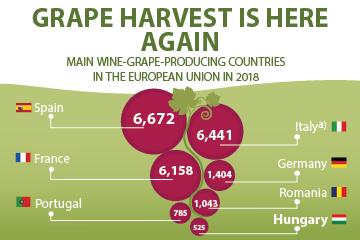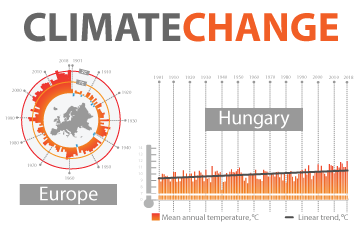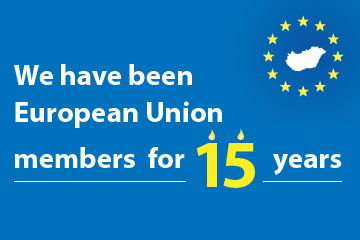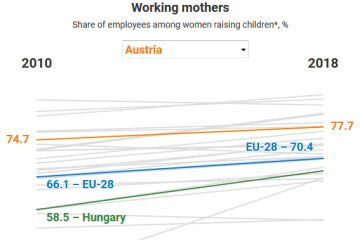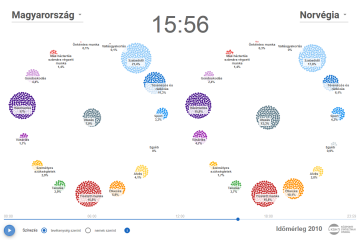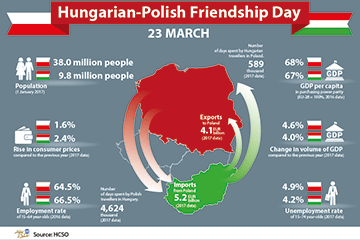International data
In order to assess Hungary’s role, share and position in the world and in the EU, it is essential to have comparable and reliable data on other countries. It may be difficult for users to find the appropriate data sources, routinely use international databases, reconcile data from different sources as well as identify and assess the reasons for any methodological differences. In order to make it easier, we have collected on this page our international publications and tables as well as links to major international databases, publication repertories, methodological collections.
Key figures
World population
Indicator description
UN demographers have prepared their estimate on the changes in world population in three (low, medium and high) scenarios. The data published here are based on the medium model, which is considered the most probable one, after the review in 2024.
Source of data:
United Nations, World Population Prospects 2024
Reference period: 2024 (further data shown on chart)
Change in volume of world GDP
Indicator description
The world’s GDP is an indicator comprising a wide range of products produced and services provided in countries on Earth in a particular period, so it measures the total output of these. The change in the volume of GDP is a generally accepted business indicator, which measures the change in the performance of the economy over time.
Last data for period: 2023
Change in volume of world exports
Indicator description
The indicator shows the change in the volume – i.e. the quantity net of changes in prices and exchange rates – of world exports from one year to another.
Source of data:
database of the World Trade Organization (WTO)
Last data for period: 2023
Changes in global tourism turnover
Indicator description
The indicator shows how the number of tourists in a given year has changed worldwide compared to the previous year. A tourist is a visitor who spends at least one night on a trip to the given area.
Source of data:
World Tourism Organization (UNWTO)
Last data for period: 2023
Featured
HCSO Monitor
The collection of interactive figures provides up-to-date information on the latest domestic and international socio-economic trends. The decisive part of the figures included in HCSO Monitor are downloadable in both image and data formats (PNG, SVG and CSV). Feel free to browse the data in HCSO Monitor, updated many times a week!
European Statistical Monitor: October edition
The chart collection contains monthly and quarterly indicators of economic and social developments by country and over time. The monthly updated chart collection with the latest available data for each indicator is available here.
International Music Day, 1 October 2024
On the initiative of violinist Yehudi Menuhin UNESCO declared 1 October the International Music Day in 1975. Wherever we may live on the Earth, music is part of our everyday life. Concerts and festivals attract crowds, accessing music content, however, underwent a significant change compared to the turn of the millennium. Digital options, the internet, replacing vinyl records and tape cassettes in a great extent, transformed the music industry; the AI appearance in turn is going to generate further significant shifts.
World Tourism Day, 27 September 2024
Initiated by the United Nations World Tourism Organization (UNWTO), World Tourism Day has been celebrated on 27 September every year since 1980. In the recent period, domestic and international tourism has been characterised by recovery and growth following the coronavirus pandemic. According to preliminary data, 9.9 million guests spent 24.5 million tourism nights in tourist accommodation establishments in Hungary in January–July 2024, 6.0% more than in the same period of the previous year.
Statistical Yearbook of Hungary, 2023
The yearbook provides an overview of Hungary's demographic, social and economic processes, environmental characteristics and their changes over time, with the help of tens of thousands of data of 500 tables, graphs and maps. Innovatively, the Tourism, catering chapter in the volume includes the gross receipts of tourist accommodation establishments by type of accommodation. Another change is that this year the Regional data chapter already presents territorial data by tourism area, giving greater emphasis to tourist destinations.
International Beer Day
Along with urbanisation and industrialisation, alcohol consumption habits changed in Hungary, with beer taking over the place of the hitherto more popular wine in the 1960s. Both production and consumption peaked in the 1980s and have been slowly declining in both areas since then. Today we are in the middle of the EU in beer consumption, with per capita consumption about half that of Czechia, the leader.
The HCSO is leading the statistical working group of the Council of the European Union
In the framework of the Hungarian leadership of the Council of the European Union the Hungarian Central Statistical Office (HCSO) is leading for half year the statistical working group of the Council. The HCSO created on the occasion of the Hungarian leadership of the Council of the European Union a new sub-page, where, beside the program of the leadership and legislation files, continuously updated news and coverages are informing the public about its leadership activity.
The Hungarian EU Presidency
Hungary will hold the rotating presidency of the Council of the European Union in the second half of 2024, in co-operation with Spain and Belgium. The priorities of the Hungarian EU presidency include strengthening competitiveness, addressing demographic challenges, developing defence capabilities and promoting enlargement in the Western Balkans. In addition, ensuring the stability of the EU's institutional transition is also an important objective for the Hungarian presidency during this period.
European Day of Parks: vote for nature! - Nature is important for all of us
The European Association of National Parks (EUROPARC) declared 24 May 1999 as European Day of Parks to commemorate the establishment of the continent's first national parks in Sweden on this day in 1909. The aim of the initiative is to raise awareness of the importance of national parks and other protected areas and thus to promote wider public support for nature conservation.
International Climate Change Day of Action - 15 May
The UN initiative aims to raise awareness of the threats to our planet's climate and the natural changes caused by climate change. Records show that 2023 was the warmest year on Earth, and parts of Europe also broke all-time temperature records. In other regions, rain falling in a single day, even the equivalent of the area's annual precipitation, caused widespread flooding and huge property damage.
Hungary has been a member of the European Union for 20 years
Hungary joined the European Union on 1 May 2004. Over the past 20 years, Hungary has made significant progress, thanks in part to EU financial support. Hungary will hold the rotating presidency of the Council of the European Union for the second time in the second half of 2024.
Unemployment rates have changed differently across the European Union
In the fourth quarter of 2022, unemployment fell in 14 EU Member States, while in 13 countries – including Hungary – it rose or remained essentially unchanged. The EU average rate fell by 0.3 percentage points to 6.2% compared with a year earlier. Unemployment rates were lowest in Czechia, Poland, Malta, Germany, Slovenia and the Netherlands (between 2.3% and 3.5%), and highest in Greece (12.1%) and Spain (13.0%).
Key indicators for the Visegrad Cooperation countries
The circumstances caused by the Covid19 pandemic also had a negative impact on the socio-economic development of the V4 countries. This publication examines the return of the economy and society to pre-pandemic levels in the V4 countries and the EU, based on the Eurostat Recovery Dashboard indicators, bearing in mind the priorities (stability, reopening, partnership) set out in the current programme of the Hungarian Presidency of the Visegrad Cooperation (Recharging Europe).
Key Figures on Europe
The digital publication of Eurostat allows a quick and interactive overview of the status of countries and offers the possibility of their comparison with other European countries. The different visualisation tools offer a playful way to look into selected statistics focusing on population, living conditions, health, working life, income and expenditure and social life.
Related themes
Methodological information
Related links
- CentropeMAP
- UN Database Update calendar
- EUROSTAT Dissemination Calendar
- National Statistical Offices
- OECD database
- IMF World Economic Outlook Reports
- IMF World Economic Outlook Databases
- Publications Office of the European Union
- OECD ILibrary
- Eurostat metadata
- OECD datavisualizations
- UN datavisualizations
- Eurostat datavisualizations
Publications |
Released |
|---|---|
| Hungary, 1st semester of 2024 | 14/10/2024 |
| Statistical Yearbook of Hungary, 2023 | 29/08/2024 |
| Hungary, 2024 Q1 | 26/08/2024 |
| Hungary, 2023 | 27/06/2024 |
| Statistical Pocketbook of Hungary, 2023 | 27/05/2024 |
| Hungary, quarters 1-3 of 2023 – On the path of disinflation | 10/01/2024 |
| Regional Statistical Yearbook of Hungary, 2022 | 17/01/2024 |
| Hungary, 1st semester of 2023 – disinflation started | 19/10/2023 |
| Statistical Yearbook of Hungary, 2022 | 23/11/2023 |
| Hungary, 2023 Q1 | 30/08/2023 |
| Statistical Pocketbook of Hungary, 2022 | 14/06/2023 |
| Hungary, 2022 | 28/06/2023 |
| Hungary in figures, 2022 | 11/07/2023 |
| Hungary, Quarter 3 2022 | 06/02/2023 |
| Regional Statistical Yearbook of Hungary, 2021 | 10/01/2023 |
Release and revision calendarPublication repertory
